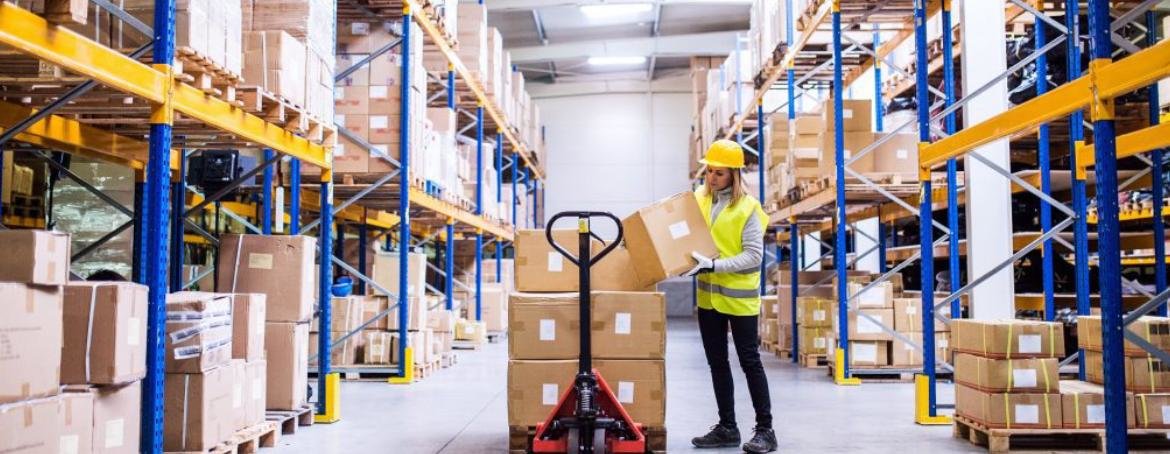
Navigating the Labyrinth: The Retail Supply Chain in 2024
By Chad Kramlich, CEO, Open Sky Group
The retail landscape is in a constant state of flux, and the backbone of this ever-evolving ecosystem – the supply chain – is feeling the tremors more than ever. From pandemic-induced disruptions to the rise of e-commerce, retailers are facing unprecedented challenges in getting the right products to the right customers at the right time. In this intricate labyrinth, navigating effectively requires two crucial tools: strong partnerships and automation.
A Tangled Web of Complexity
Gone are the days of linear supply chains where products flowed seamlessly from manufacturer to retailer to consumer. Today's retail landscape is characterized by a web of interconnected players, from raw material suppliers and manufacturers to distributors, third-party logistics providers, and a diverse range of retail channels. This intricate network brings increased agility and responsiveness, but also introduces vulnerabilities and inefficiencies.
The Power of Partnerships: Building Bridges, Not Walls
In this complex environment, collaboration is key. Retailers can no longer afford to operate in silos. Building strong partnerships with all stakeholders – from suppliers to technology providers – is essential for navigating the labyrinth.
- Supplier Collaboration: Close collaboration with suppliers allows for better demand forecasting, improved inventory management, and faster response times to changing market trends. Open communication and shared data visibility can lead to optimized production schedules and reduced lead times.
- Logistics Harmony: Partnering with efficient and reliable logistics providers is crucial for ensuring timely and cost-effective product delivery. Utilizing technology platforms that provide real-time tracking and shipment visibility can further enhance supply chain transparency and efficiency.
- The Tech Tango: Embracing technology partnerships opens doors to innovative solutions that streamline operations and optimize decision-making. From warehouse automation to AI-powered demand forecasting, technology providers can be valuable allies in navigating the supply chain labyrinth.
Retailers can no longer afford to operate in silos. Building strong partnerships with all stakeholders – from suppliers to technology providers – is essential for navigating the labyrinth.
By Chad Kramlich, CEO, Open Sky Group

Automation: The Efficiency Engine
Building a Resilient Labyrinthine Future
While partnerships provide the framework, automation acts as the engine that drives efficiency and accuracy. Integrating automation into key areas of the supply chain can yield significant benefits:
- Warehouse Automation: Implementing robotic systems for tasks like order picking, packing, and palletizing can significantly reduce labor costs, improve order fulfillment accuracy, and increase warehouse throughput.
- Inventory Management Automation: Utilizing AI-powered inventory management systems can optimize stock levels, reduce the risk of stockouts and overstocking, and free up resources for other strategic tasks
- Last-Mile Automation: Autonomous delivery vehicles and drones are revolutionizing the last mile of the delivery process, offering faster, more cost-effective, and sustainable delivery options.
By fostering strong partnerships and embracing automation, retailers can transform the labyrinthine retail supply chain into a well-oiled machine. This not only leads to increased efficiency and cost savings but also empowers retailers to deliver a seamless and exceptional customer experience. In the ever-evolving retail landscape, collaboration and automation are the north stars guiding retailers towards a resilient and prosperous future.
Remember, the future of the retail supply chain is not about building walls, but about building bridges. By working together and leveraging the power of technology, retailers can navigate the labyrinth with confidence, ensuring that the right products reach the right customers, at the right time, every time.

Reading Now
Also in this edition













Jared Simon, President, Manitoba Harvest and Tilray Wellness
Jared Simon is an experienced leader of natural food brands, focused on building a more healthful and sustainable food system. Jared brings 20 years of general management experience in the food industry along with a deep knowledge of public health. Prior to joining Tilray Brands, Inc., Jared was the President of CORE Foods, an innovative functional food company reshaping the nutrition bar category. Jared spent nearly 10 years at Hain Celestial, holding various leadership positions including Vice President & General Manager roles over Hain Celestial’s Baby, Snacks, and Pantry divisions. Jared also served as Hain Celestial’s Vice President of Food Strategy & Advocacy. Jared started his career at Kraft Foods, where he spent 10 years in brand management and shopper marketing roles.
Jared holds a Master of Business Administration from the Harvard Business School, a Master of Public Health from the Johns Hopkins School of Public Health, and a Bachelor of Science in Economics from the Wharton School at the University of Pennsylvania. Jared has served as a member of the Advisory Board and CSO Group for Food Tank – The Think Tank for Food.